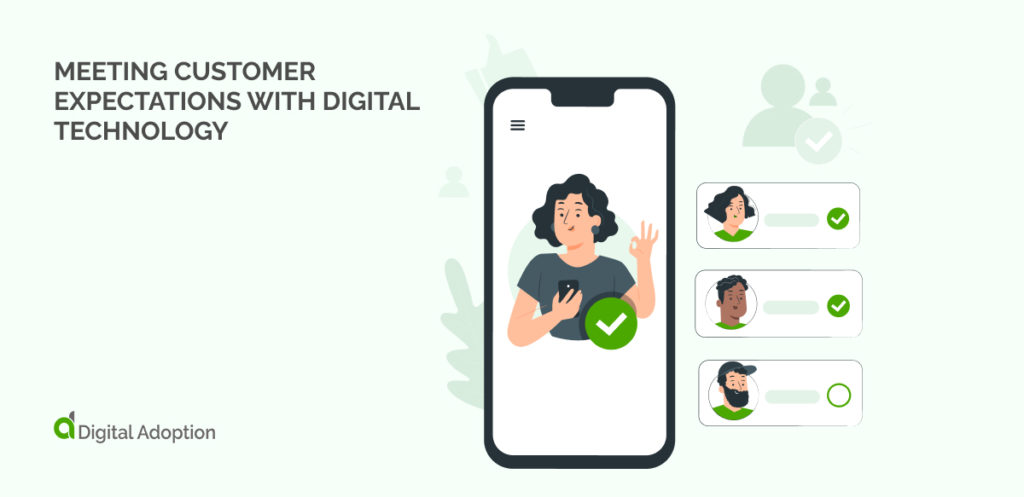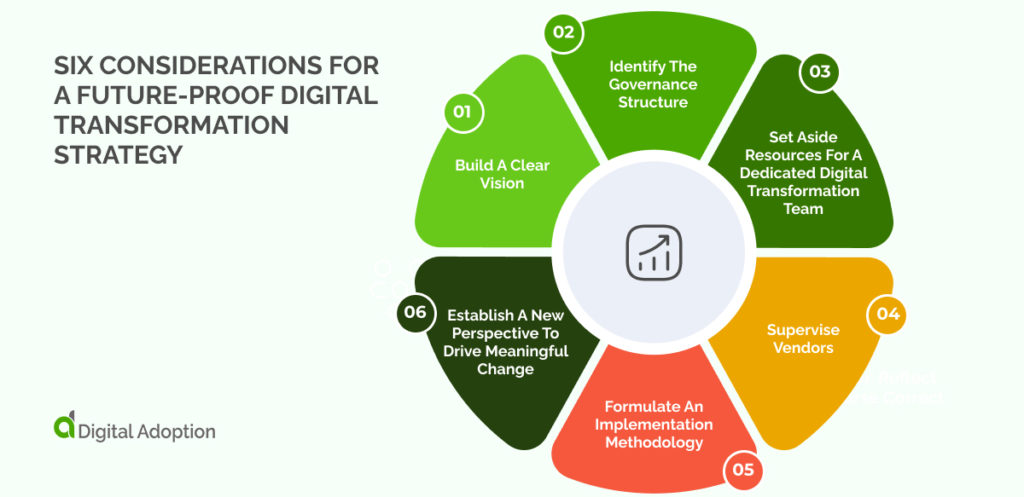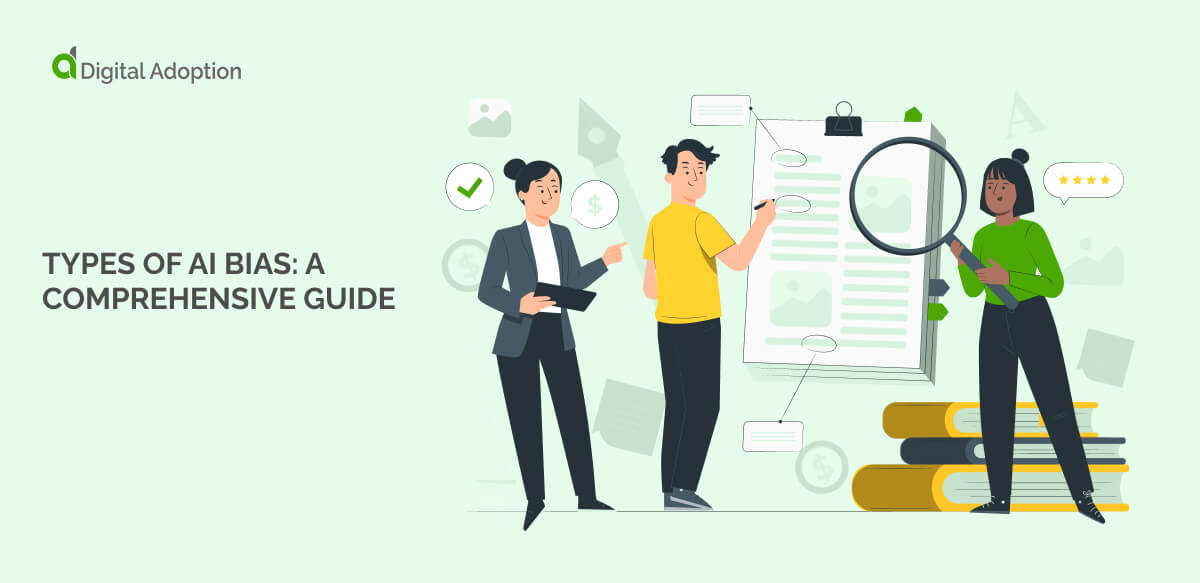Preparing for Future Disruptions
The Covid-19 pandemic has had an unprecedented impact on the way we work. Many businesses were forced to change to a new digital strategy and adapt to an unfamiliar business model. Companies invested in video conferencing software and digital technology to ensure their workforce remained productive.
Remote work was a major digital disruption for employees too. The effects of the pandemic are still felt today, with many workers preferring to work from home permanently. Gartner’s recent insight into the future of work for organizations and people reported that ‘55% of employees say their ability to work flexibly will impact whether or not they stay with their employer.’
The pandemic accelerated the transition to digital tools for many organizations. This trend will continue exponentially as digital disruptions shape the business world. Futureproofing essential business processes is more important than ever in the digital age.
That’s why so many organizations are undergoing a digital transformation journey. Digital technologies increase workforce productivity, enhance business operations, and encourage digital resilience. Successful business leaders understand that they must overhaul legacy systems and embrace new technologies to meet the demands of key stakeholders.
Meeting Customer Expectations with Digital Technology

As people become familiar with digital technology, customer expectations evolve. Customers expect a seamless customer experience. Digital transformation streamlines existing processes, eventually impacting customer-facing services.
Technologies such as automation, artificial intelligence, and cloud technology enable companies to provide exceptional customer experiences by introducing a digital automation platform. Customers can access all their information in one place and receive help faster through online chatbots. A comprehensive digital transformation strategy is the only way organizations achieve true customer engagement in the digital world.
The benefits of digital transformation are endless. But many organizations fail in their digital transformation efforts because they don’t align their strategy with future trends. Business leaders don’t need to be fortune tellers, but they do need to implement future-proof digital transformations.
Six Considerations For A Future-proof Digital Transformation Strategy

Future-proofing digital transformation means getting ahead of digital disruptions. New and emerging technology provides opportunities for organizations to embrace business models, shift to new domains, increase their capabilities, and find new solutions to everyday business challenges.
Digital transformation leads to digital maturity. Digital technology increases efficiency across all business areas, meaning the organization can respond faster to potential problems. By embracing digital tools, business leaders can better handle future disruptions.
Here are six critical elements for creating a digital transformation strategy that will secure your company’s place in a highly competitive future.
Build A Clear Vision
Communicating a vision is essential for a successful digital transformation. Employees and executives must understand the direction of progress. A clear vision will engage employees in new ways of working, encouraging them to see the benefits of digitalization. Building a vision will also increase senior management employees’ trust across the organizational hierarchy.
Digital transformation strategies work best when employees and executives have a strong sense of direction. Crafting a compelling vision involves asking the following questions:
- How will digital transformation meet business goals?
- How will everyone contribute to the company vision?
- How will digitalization add value to daily work?
By creating a clear vision for success, business leaders address the main reason for digital transformation failure, employee resistance. Employees resist change for several reasons, but mostly because they don’t understand the value of transformation. Communicating your strategy to the workforce makes them feel included and encourages them to drive the process forward.
Identify The Governance Structure
Identifying your organization’s governance structure is vital to any successful digital transformation strategy. Understanding how the business functions from the top down makes it easier to see the impact of digital transformation. Assess the impact of technology from the c-suite, senior management, low-level employees, and eventually the customer experience.
Governance is an essential part of change management. Understanding governance structure helps establish accountability and guide decision-making throughout the transformation process. It means companies can take a more democratic approach to change, ensuring leaders are identifiable and have authority over some aspects of the process. Without a clear governance structure, employees become uncertain, and digital transformation begins to stall.
Set Aside Resources For A Dedicated Digital Transformation Team
It’s essential to create a dedicated team to drive digital transformation success. A successful digital transformation team comprises critical thinkers and balanced expertise, using their strengths to achieve a common goal. Enterprises must support leaders and cross-functional teams across the entire organization.
Finding the right leaders to spearhead the implementation phase will increase enthusiasm and boost employee engagement. A dedicated digital transformation team will help the organization adapt to new processes and accelerate change across the business.
A successful digital transformation team consists of the following people:
A visionary
The visionary is responsible for influencing change. They focus on creating a digital-first culture by changing attitudes to digital technology. Their role as visionary is to craft a compelling vision for the company’s future. They must also communicate the vision effectively to employees and stakeholders, ensuring all business areas work in tandem.
An analyst
The analyst is naturally observant and able to assess how processes interconnect across the business. Their role is to understand how the business functions and suggest ways to improve processes across the board. The analyst is responsible for achieving higher levels of efficiency, ensuring positive ROI, securing executive buy-in, and mapping out process flows.
A planner
A planner must be agile to guide the project from the early stages of conception to implementation. The planner requires full support from the senior management to implement a cohesive plan. They help to create a strategy for organizational change, including employee support, training, and stakeholder alignment.
Your team’s specific layout will depend on your digital strategy’s requirements. Your business may allocate more resources towards software investments and need more IT expertise. It depends on business goals and existing talent.
Supervise Vendors
There are many tools business leaders use to implement new technology into the workplace. Finding the best integration platform can be difficult, but it will make all the difference.
Digital solutions aren’t a one size fits all application. IT investments can be expensive and time-consuming, so it’s crucial to consider the market of available options. Senior leaders must review potential vendors and digital solutions to ensure a positive return on investment.
Vendors may offer a popular solution that simply doesn’t align with your company culture or organizational structure. Prioritize the most vulnerable business areas in need of development. IT transformation requires a targeted approach and involves finding the best platform to develop weak areas of your business.
The most critical aspect of supervising vendors is ensuring their solution works as part of an enterprise-wide digital adoption strategy. An integration platform must align with the company’s efforts to improve processes, operations, and services. Even though digital adoption focuses on employee engagement, the impact of new applications and systems eventually reaches customers.
Formulate An Implementation Methodology
Finding the best implementation methodology can be challenging, but it’s essential to guiding change. Implementation methodologies act as frameworks for introducing digital technology in the workplace. They rely on proven and effective tactics for implementation and allow business leaders to scale and repeat the process, if necessary, quickly.
To find the best implementation methodology, you must assess the following areas:
- Organizational structure, including leadership capabilities and resources
- Company culture and attitudes to change
- The current state of the customer journey
- The level of change management
It’s essential to remain agile throughout the implementation phase. You must be willing to change the plan depending on employee satisfaction. Create a system for collecting feedback. Gauge employees’ reactions to change and adjust the strategy to ensure engagement remains high.
Establish A New Perspective To Drive Meaningful Change
Future-proofing digital transformation requires the support of everyone in the business. . Employees determine if an organization achieves its business outcomes. Gartner’s recent research into organizational change suggests that employees are the driving force behind the large-scale transformation. ‘In our survey of more than 6,500 employees and over 100 CHROs around the globe, we found that the best organizations rely on their workforce.’
Establish a new perspective on change to ensure everyone can see the direction of the transformation. Communication is key. Business leaders must consistently communicate their digital strategy to minimize resistance. This will ensure the company stays competitive in a highly evolving market.
Thoughts For The Future

Business leaders in the digital age understand that every business decision determines the future. More than ever, companies must accelerate change, embrace digitalization, or face being left behind.
Future-proofing your business involves identifying a clear governance structure, building a dedicated transformation team, and utilizing a robust implementation methodology. Digital transformation requires a holistic approach and cohesion across the enterprise. Don’t rely on one business area to propel the business forward.
Business leaders must be transparent with employees about the direction of the company. Forward-thinking business leaders must assess the risks of their change initiative and work on predicting future trends. Above all else, future-proofing is about preparation and being ready for anything that the future may hold.













